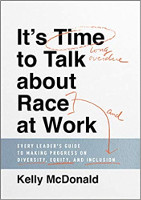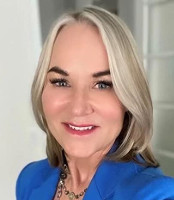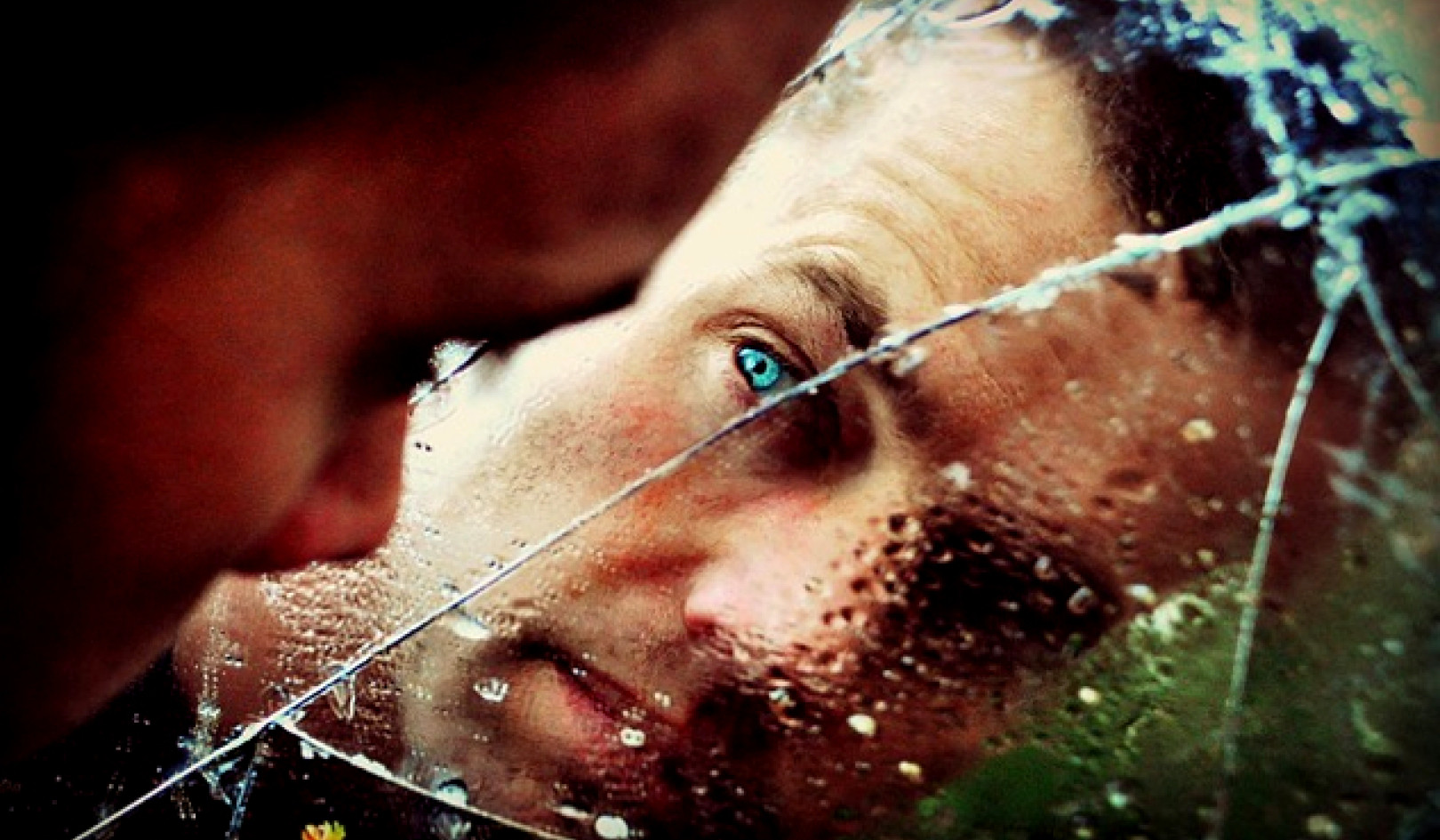
Image by maximiliano estevez
Narrated by Pam Atherton.
Watch the video version on InnerSelf.com or on YouTube.
Over the course of your career, you’ve probably heard people at work say something that was racist, sexist, demeaning, or offensive, even if it wasn’t directed at you. You may not have said anything or done anything about it, because, when it comes to work, it can be hard to speak up.
Every company has its own culture and, in many organizations, the easiest thing to do is to let it go. After all, we’re talking about your job. You have to work with these people, day in and day out. You think to yourself, “It’s not smart to rock the boat. Just let it go.” But it gnaws at you.
Here’s why “letting it go” is not the answer and why it makes you feel even worse:
- Those who make offensive, rude, and demeaning comments will continue to do so unless they are called out on it. They may not even know that what they’re saying is wrong—or why it’s wrong— but they sure won’t understand that it’s unacceptable if no one tells them.
- Offensive comments hurt and cause damage. For the target or recipient of the comment, they can be devastating. But others are also hurt by such comments. It’s hard to hear a demeaning comment directed at someone you work with. And it’s excruciatingly painful and awkward to witness someone being bullied or victimized by offensive comments. Even if you’re just a bystander, not participating in the conversation at all, you can feel how awful and wrong it is, and it will affect you.
- If no one speaks up to confront a racist, sexist, homophobic, or xenophobic comment, onlookers will feel guilt. They know the offensive comment is wrong. They know someone should say something and stop it. If no one does, they will feel both personal and collective guilt. While these two kinds of guilt are different, the combination of them is highly destructive. Here is an explanation of each kind of guilt:
Personal guilt is on the individual bystander. It’s the guilt a person feels because he or she did nothing in the moment to stop someone from harassing or attacking another.
For many people, the reaction to witnessing another person being harassed is to freeze. Perhaps they don’t know what to say or do or they just don’t want to get involved, thinking, “This is none of my business.” Or they’re dumbstruck because they are so blindsided by hearing or seeing harassment that they can’t fully absorb what is happening, let alone how they can help. They might fear confrontation or recrimination—or that they will become the next target. So they tell themselves, “This doesn’t concern me” or “This isn’t my battle to fight.” But deep inside, they know they should have said something, yet they didn’t.
They may not be a bad person, but their inaction in the moment makes them feel like one. Their personal guilt becomes a weight on them and takes a toll with job stress, anxiety, and depression.
Collective guilt is different and, in my opinion, even more damaging. Collective guilt occurs when a group of people witness a verbal or physical attack on another, but no one in the group does anything to stop it. It’s “collective” because the entire group is guilty of doing nothing.
At work, if no one speaks up or does anything to help a coworker who is being harassed, there is a realization that “This is how it is here” or “Wow, this is who we are at this company.”
These are terrible concepts to absorb. It is hard to face—and accept—that you may end up saying to yourself, “Hurtful comments can be made at work, attacking a coworker, and no one will do anything about it, including me.” This realization not only creates a sense of guilt in the bystander, but also shame.
Shame is a huge and heavy burden. It doesn’t go away easily or quickly. It can be so unbearable that people will leave an organization rather than feel ashamed of their company or how they, themselves, behave there.
Overcoming the Bystander Effect
The bystander effect is a phenomenon that occurs when a group of people witness a problematic situation with another person, but no one will stop it or disrupt it. In fact, the greater the number of people who are present when “the problem” occurs, the less likely they are to intervene or help the person who is in distress. Why? It’s the group dynamic: being part of a crowd means that no specific person has to take responsibility for taking action. We can absolve ourselves: we may not have done anything to help, but hey, neither did anyone else.
To overcome the bystander effect, we must speak up when harmful, offensive, derogatory, or discriminatory things are said in our presence. To not do so is to be unintentionally complicit in the offense.
Better Late Than Never
When confronted with things that are overwhelming, uncomfortable, or frightening, people have one of three reactions: fight, flight, or freeze. At work, as a bystander witnessing a demeaning or racist comment being made to a coworker, “fight” would mean speaking up and defending your colleague and insisting that the perpetrator halt their insults immediately.
“Flight” could mean leaving the meeting, leaving the conversation, or trying to change the subject. Flight is about avoiding confrontation altogether. It may be because you don’t want to get involved. Or you don’t want to become the next target. Or you’re afraid that speaking up could hurt your career, especially if you’re in a more junior role than the perpetrator.
The third type of reaction, “freeze,” is probably the most common. In the moment, you freeze because you simply don’t know what to do or say. You’re momentarily paralyzed and you do nothing. Perhaps your mind is racing with what you should say, or you feel completely trapped and overwhelmed in a terribly uncomfortable situation. You literally have no idea what to do, so you do nothing.
If you freeze in the moment, you may be flooded with guilt and remorse later. When your mind clears and your nerves calm down, you’ll probably mentally replay the incident and think of all the things you could have or should have done. And you may feel just awful that, in the moment, your reaction was to do nothing at all. Your feelings can be worsened by the thought that “you missed the window” to say something and now the moment is gone.
The good news is that the moment isn’t gone. You can still speak up. And you can articulate your comments clearly, because you’ll no longer be in “fight, flight, or freeze” mode. Gather your thoughts and follow up with both the perpetrator and the victim. A conversation with each might go something like this:
To the perpetrator:
Sarah, I want to speak with you because, in the meeting yesterday, you made a comment to Cliff that was really out of line. You said ______ and ______, and it was really hurtful, offensive, demeaning, and inappropriate. That’s not who we are here at this company and it’s not OK. I should have said something when it happened, but I was so stunned that my mind went blank. If it happens again, I will speak up, and I will report it to management.
To the victim:
Cliff, in the meeting yesterday, Sarah made a comment to you that was inappropriate, hurtful, and derogatory. When it happened, I was dumbstruck, and I didn’t say anything. I want you to know that I am appalled that I didn’t speak up at the time, but I have done so now. I talked to her and let her know it was unacceptable. I want to apologize to you, because I let you down in that meeting. I should have spoken up right then and there and I didn’t. I’m sorry. It won’t happen again. I also wanted to check in with you and see if you’re OK and ask what I can do now. Please know that I support you, even if I blew it in the moment.
It is important to know that it’s never too late to say something to both the perpetrator and your colleague. Not saying anything— ever—implies that there is general consensus that racist, sexist, or any offensive comments are OK.
Copyright 2021. All Rights Reserved.
Excerpted with permission.
Publisher: John Wiley & Sons, Inc.
Article Source:
It's Time to Talk about Race at Work
It's Time to Talk about Race at Work: Every Leader's Guide to Making Progress on Diversity, Equity, and Inclusion
by Kelly McDonald In It's Time to Talk about Race at Work, acclaimed speaker and bestselling author Kelly McDonald delivers a much-needed roadmap for business people. This book will help you successfully create a fair and equitable workplace that recognizes diverse talent and fosters productive and constructive conversations in your organization.
In It's Time to Talk about Race at Work, acclaimed speaker and bestselling author Kelly McDonald delivers a much-needed roadmap for business people. This book will help you successfully create a fair and equitable workplace that recognizes diverse talent and fosters productive and constructive conversations in your organization.
This book shows you exactly what to do and how to do it so that you can make real progress on diversity and inclusion, regardless of the size of your organization.
For more info and/or to order this book, click here. Also available as an Audiobook and a Kindle edition.
About the Author
 What does a blond haired, blue-eyed, White woman know about diversity? Kelly McDonald is considered one of the nation’s top experts in diversity, equity, and inclusion, leadership, marketing, the customer experience, and consumer trends. She is the founder of McDonald Marketing, which has twice been named one of the “Top Ad Agencies in the U.S.” by Advertising Age magazine and ranked as one of the fastest-growing independently-owned companies in the U.S. by Inc. Magazine.
What does a blond haired, blue-eyed, White woman know about diversity? Kelly McDonald is considered one of the nation’s top experts in diversity, equity, and inclusion, leadership, marketing, the customer experience, and consumer trends. She is the founder of McDonald Marketing, which has twice been named one of the “Top Ad Agencies in the U.S.” by Advertising Age magazine and ranked as one of the fastest-growing independently-owned companies in the U.S. by Inc. Magazine.
Kelly is a sought-after speaker and was named one of the “10 Most Booked Speakers in the U.S.”. She is the author of four bestselling books on diversity & inclusion, marketing, the customer experience and leadership. When she’s not on the road speaking, she enjoys boxing (yes, boxing, not kickboxing) – and shopping for high heels.
Visit her website at McDonaldMarketing.com


























